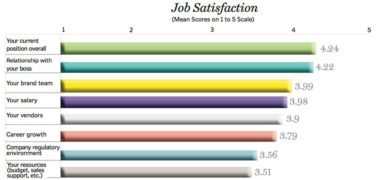Understanding when and where an ad agency or business consultancy fits into the marketing and communications supply chain is essential to the success of any pharma brand’s launch effort (or business health as a whole). With a dependable business partner in your camp, the seemingly endless mountain of “to do’s” become a lot less daunting. You’ll be patting yourself on the back for a great decision. Yet, choose the wrong type of partner, be it ad agency or consultancy, and you’ll quickly discover how painful that mistake can be.
The healthcare industry is teaming with life sciences experts and one thing is certain—all are hungry for new business. After all, new business is the lifeblood that sustains any service-oriented business, and ad agencies and consultancies embody this concept.
Whether you’re a CEO, COO, or brand manager responsible for bringing a new product to market, the pressure leading up through a successful launch never lets up—even after crossing the commercialization finish line. A quick peek at the customary launch-readiness roadmap—recognizable as a torrent of to-do’s spread across a ginormous Gantt chart—with its dozens of parallel works streams and dependencies, is enough to make even the bravest of individuals break into a cold, hard sweat. And with the daunting realization of a seemingly bottomless task list and never enough internal resources or experienced individuals on hand to get it all done, the call goes out for help. But who and where does one turn to for that kind of expertise?
Having been an owner/operator of both the consultancy and ad agency model (and now both combined) has afforded me a somewhat objective view of the playing field, and what appears to be the best situation for pharma clients and their chosen business partnerships.
The life sciences industry superheroes who arrive just in time to save the day aren’t fictional DC or Marvel characters. There is no one Superman, Wonder Woman, or Black Panther. Instead we call in the usual cast of cool and crazy characters—“upstream” business consultants and their “downstream” counterparts, the ad agencies. Depending on your need, lead-time, and budget, you make the decision of when to retain the right experts, and plan for the best possible outcome. So far, so good.
Working with Consultancies
The consultancy model has almost always been project based. You contract with an industry specialist, whether an individual or team, for a pre-determined period of time. As sector experts, your new (and high priced) resource will parachute in totally prepared to deliver value immediately. They focus on your “pain point” of the moment, whether its market sizing, audience segmentation, audience valuation, supply chain analysis, payor strategy, etc. Taking as much guesswork out of the picture as possible is the domain of the consultant. Consultants are typically tasked with deciphering specific, complex initiatives that might require quantitative and/or qualitative research in order to generate vast amounts of data to analyze and arrive at a set of well-considered recommendations.
Using a new pharmaceutical launch as an example, one typically relies on business consultants early on, during the upstream phase of clinical and product development. Time-wise, you are talking anywhere from 36 to 48 months out from an anticipated launch date, any obstacles or FDA impediments notwithstanding.
Once the recommendations are tendered, there is the handoff back to the client and/or agency for implementation…diplomatically referred to as “next steps.” The specialized practice areas of the consulting firms revolve around tight, analytical thinking but no actual execution in the real world. Because consultants are so deeply immersed in certain industries and practice areas, they tend to enjoy a revered relationship with the C-suite. The client’s senior management desperately looks to them to shed light on essential problems or initiatives and, consequently, consultant’s recommendations are rarely challenged.
Working with Advertising Agencies
Advertising agencies reside downstream of the consultancies. Their business model relies on securing an exclusive and sustainable relationship with the client, one that will hopefully take the form of an Agency of Record (AOR) assignment. As AOR, the agency deploys and maintains a dedicated team of planners, strategists, creatives, and support staff who the client can (and do) call upon day and night, turning out work oftentimes at a breakneck pace. As the lead marketing communications partner, the agency isn’t simply in charge of building the brand, they are also entrusted to be the brand’s guardian, a position of honor bestowed on the only day-to-day partner that can balance the big picture with the creative nuances that will make or break the brand.
An agency will typically be chosen and on-boarded anywhere from 18 to 24 months out from product launch. Known for generating flashy “big ideas” based on strategic and audience insights, the agency reigns as master of all execution, adorning conference rooms with “out-of-the-box“ creative ideas—churning out a boundless display of visual metaphors and clever word play.
For agencies, the two-year runway is almost always enough time to deliver the essentials: Conduct TPP research, arrive at the product positioning, plan market-shaping activities, develop the brand plan, solidify the brand identity, explore and finalize creative campaigns, and build out a complete set of tactical launch initiatives and sales force materials, all in time for the PDUFA date. When it comes to brand building, the ad agency is in its element.
A Simple Recap
To take a second look at how pharma brands work with these two different models, I think it’s helpful to re-frame the discussion in more reductionist terms:
- Consultants are brought in when the client needs critical insight into new business initiatives or pain points. The client then passes that insight on to the ad agency which is tasked with interpreting and transforming the information into a creative strategy and then executing on that strategy with compelling, outbound communications to key audiences.
- Consultants, by definition, are granular and complex in their processes and analytic findings. Conversely, ad agencies must simplify this complex analysis and reduce it down to its most essential meaning via the creative process.
- To use a medical analogy, consultants are specialists while ad agencies are general practitioners.
- Consultants = analytics. Ad agencies = conceptualization.
The Emerging Confluence
All that said, business models evolve and the lines of distinction separating business consultancies and ad agencies are beginning to blur. Consultancies and agencies, once colleagues working across the aisle, have adopted a land-grab mentality. Each are encroaching on the other’s territory, wielding expanded capabilities and claiming to possess the other’s core competencies. Not exactly “Game of Thrones,” but nevertheless a real and critical contest for survival has developed between these two business models.
In the general market, we’ve seen this trend escalating for years with the consultancies proving to be the aggressors and taking the upper hand. The biggest consulting firms such as Accenture, Deloitte, IBM, KPMG, McKinsey & Company, etc. have collectively invested well over a billion dollars in agency acquisitions1 in the last couple of years, with the upward trajectory escalating each year. On the agency side, push back in reverse M&A activity by agencies and holding companies has been far less robust, with some exceptions being Publicis Sapient and Barkley’s XperienceLab. Agencies for the most part have tried to counter the incursion of consultancies by starting their consulting divisions, as in R/GA’s business transformation practice.
Marketing Shifts
In our own niche of healthcare marketing, we’ve seen the steady and impressive growth of the consultancies. Estimated revenue growth for healthcare consultancies is projected to be more than $60 billion by the end of this year—up from $45 billion last year2. This is close to parity with revenue growth of the healthcare advertising market3. A principal reason for this kind of growth: The industry’s digital transformation of all enterprise processes and the high demand for IT-related consulting.
We also see the same kind of M&A wars as in the general market. Case in point: UDG Healthcare’s acquisition last year of communications shop Create NYC and consulting firm SmartAnalysis. All this plays into the undeniable trend of the confluence of the two business models as they devour each other’s tails to capture the other’s budgets—or prevent their own budgets from being captured.
From a purely objective view of the business terrain, it certainly appears that this confluence I speak of is being dominated by the consultancies. The reason for this is clear: Financial leverage. The big consultancies simply have vastly greater cash reserves than even the large advertising holding companies like WPP, IPG, and Publicis. Consultancies have the wherewithal to not only acquire and absorb creative agencies at scale, but also to attract the best senior advertising managers to their camp. Also, consultancies have more contact with senior management and board members and, as the prime architects of change initiatives, they have the influence to divert advertising budgets into their own organizations. The latest study4 shows that more than 20% of client-side marketers plan to shift work from agencies to consulting firms this year.
Consultants vs. Creatives
But, again, as one who has immersed himself in both of these business models, I question if consultancies can ever truly replace or subsume agencies. The reason: Company culture. Consultancies by-and-large are not suited culturally to adopt the ethos of creativity. The creative process does not thrive in a business environment based on big data management and its clinical analysis. There is, in fact, this magical, intuitive thing called the creative process that has always been at the heart of the agency world. I believe that the value of that magic is immeasurable for the ultimate success of the brand and cannot be replaced by any amount of data analytics, M&A strategies, or boardroom politics.
Resources:
1. Consultancy.uk: Published 2/05/18
2. Consultancy.org: Published 9/7/18
3. Research & Markets: Published 3/25/19
4. Digiday: Published 4/17/19









